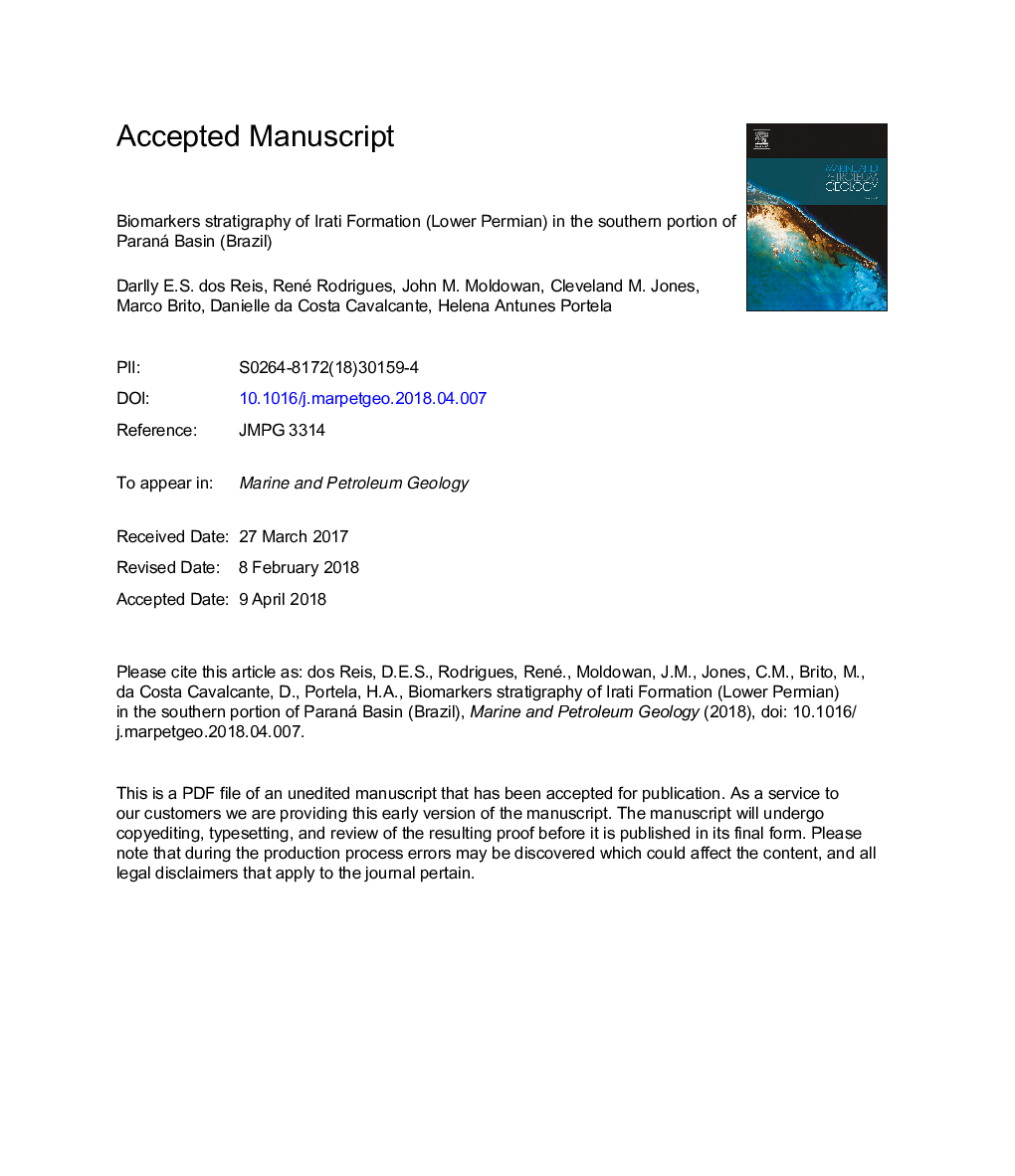| Article ID | Journal | Published Year | Pages | File Type |
|---|---|---|---|---|
| 8909035 | Marine and Petroleum Geology | 2018 | 103 Pages |
Abstract
This study covers the application of biomarkers as stratigraphic markers in a Lower Permian marine section from the Paraná Basin, southern Brazil. The biomarker variations reveal changes in sedimentary environment that were not detected by sedimentological and paleontological methods and will contribute to high resolution stratigraphy. The Irati Formation contains two lithostratigraphic units: (1) the lower unit (Taquaral Member) is composed of shales, deposited in a marine epicontinental to restricted environment and (2) the upper unit (Assistência Member) which consists of carbonates interbedded with shales and organic-rich shale intervals deposited in a restricted marine environment. The biomarker differences observed in the Taquaral Member can be explained by two different types of organic matter. The lower and upper parts are characterized by a high relative abundance of high molecular weight n-alkanes, C27 (17α) trisnorhopane, C31 αβR homohopane, high hopanes/steranes ratio, and low hydrogen index values. This facies contains greater relative amount of terrestrial organic matter. The low hopanes/steranes ratio, together with the high hydrogen index values and amorphous organic matter relative proportion observed in the middle part of the Taquaral Member indicate a more marine organic matter contribution. In the Assistência Member based on gammacerane/C30 αβ hopane ratio, C28ααα (20R) methylcholestane/C29ααα (20R) methylcholestane ratio, total organic carbon, hydrogen index values, palynofacies and sedimentary structures it was possible to distinguish changes in salinity and redox conditions. The bituminous shales intervals were deposited in an anoxic environment (high total organic carbon, high hydrogen index values, high preserved amorphous organic matter content) with lower salinity (lower gammacerane/C30 αβ hopane and C28ααα (20R) methylcholestane/C29ααα (20R) ethylcholestane ratios) on the other hand, the limestones intervals were deposited in an aerobic environment (low total organic carbon, low hydrogen index values, high oxidized organic matter content) with higher salinity (higher gammacerane/C30 αβ hopane and C28ααα (20R) methylcholestane/C29ααα (20R) methylcholestane ratios).
Related Topics
Physical Sciences and Engineering
Earth and Planetary Sciences
Economic Geology
Authors
Darlly E.S. dos Reis, René Rodrigues, John M. Moldowan, Cleveland M. Jones, Marco Brito, Danielle da Costa Cavalcante, Helena Antunes Portela,
